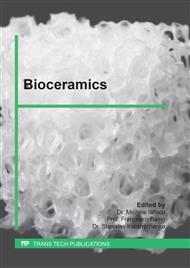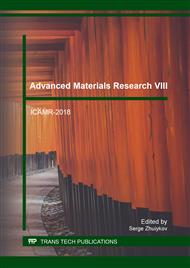p.115
p.119
p.124
p.131
p.136
p.140
p.149
p.155
p.160
Fabrication of Mesoporous Bioactive Glass Nanoparticles by Sol-Gel Method
Abstract:
Bioactive glass (BG) is characteristic of its great biocompatibility as well as osteoconductivity. Application of BG after surgery (e.g., tumor resection) aids rehabilitation of previously traumatized area, promotes bone regeneration, and prevents aggravation of wounds. In this in vitro study, bioglass nanoparticles (BGN) were successfully produced via sol-gel method. We observed the morphology of BGN through Scanning Electron Microscopy (SEM) and Transmission Electron Microscopy (TEM). Particle size was measured by Dynamic Light Scattering (DLS): 182.9 nm ± 37.7 nm in diameter, which corresponds to images obtained by SEM and TEM. We then synthesized BGs containing different proportions of Ca and P ions. Under different pH values, gels with various morphologies were formed.
Info:
Periodical:
Pages:
136-139
Citation:
Online since:
March 2018
Authors:
Keywords:
Price:
Сopyright:
© 2018 Trans Tech Publications Ltd. All Rights Reserved
Share:
Citation:



